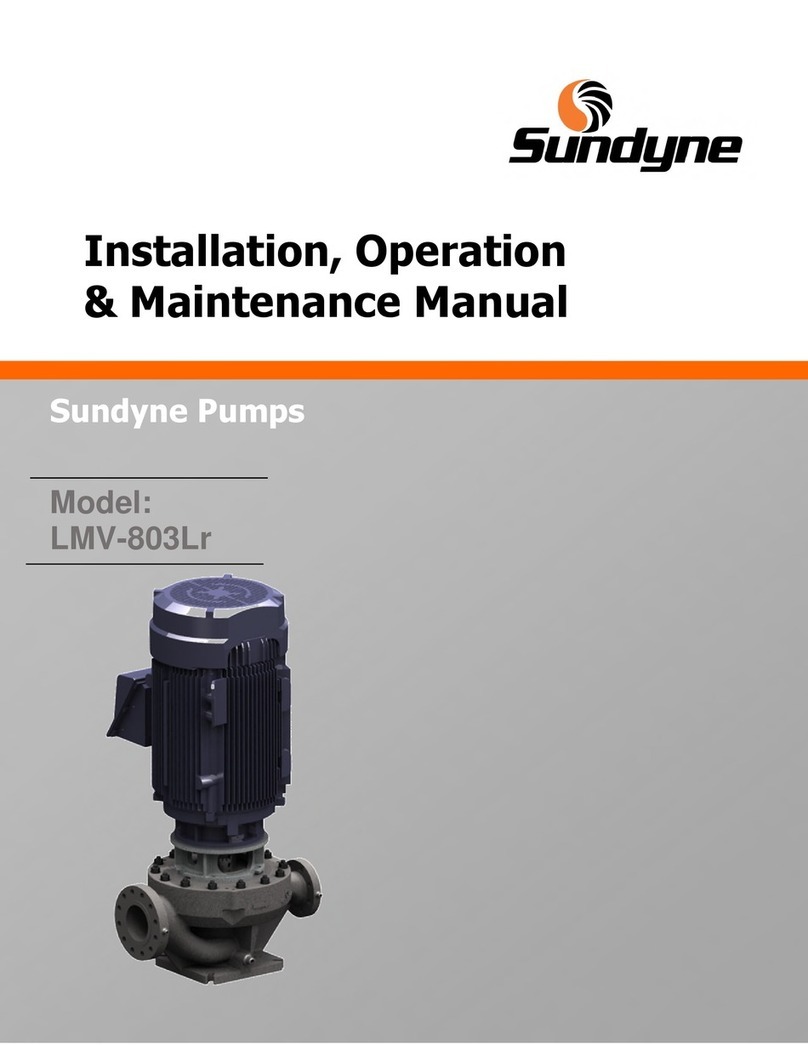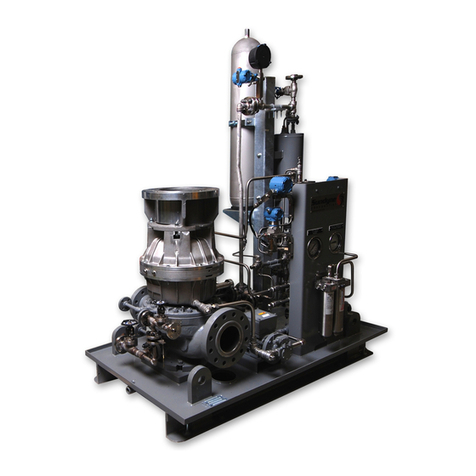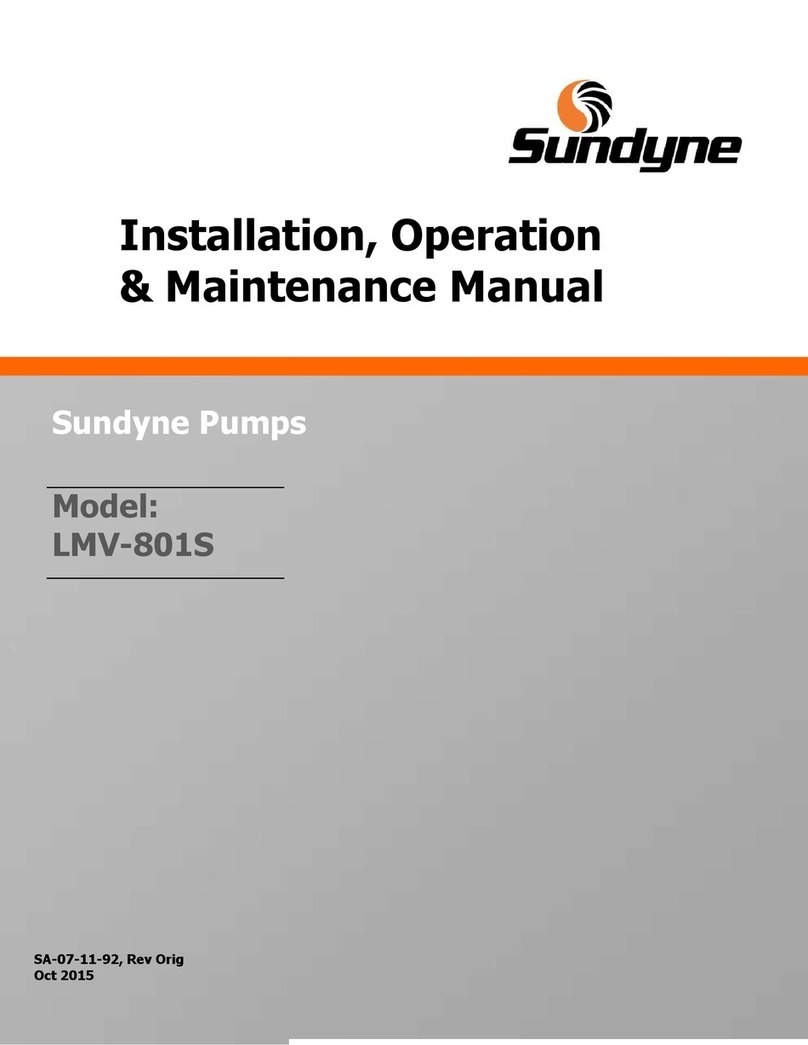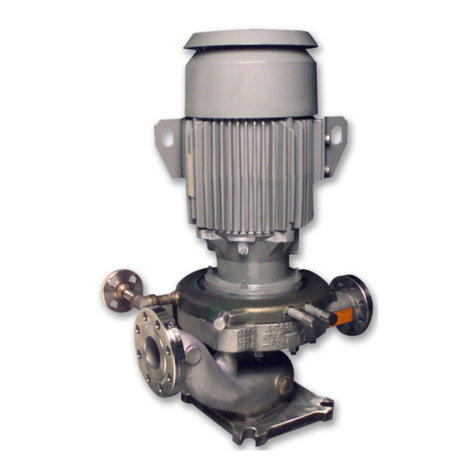
1
INTRODUCTION
This manual presents installation, servicing,
troubleshooting, maintenance and spare parts
information for the latest configuration of Sundyne
LMV-333.
Parenthetical numbers included in the text
correspond to item numbers on the illustrated
figures. The item number of a part is based on the
part’s function, and the correct spare part can be
ordered for any pump by referencing the item
number and serial number.
Information that may be required regarding
performance, alterations, or detailed technical data
which is not included herein, may be found in the
specification sheet and parts list accompanying the
unit, or may be obtained from your Sundyne
Corporation representative. Reference the pump
serial number in any communication with the factory.
Custom-made auxiliary equipment cannot be shown
in this manual. Refer to the outline drawing for
specifics.
I. INSTALLATION
1. INSPECTION
Check visually for shipping damage. If damage is
found, notify the carrier and Sundyne Corporation
promptly.
2. STORAGE
If the pump is not to be installed immediately:
A. Protect from exposure to moisture and dust.
B. Shipping cover and pipe plugs must be kept
in place.
C. Consult your Sundyne representative if
storage time will exceed six months.
D. For driver storage (motor or turbine), observe
manufacturer’s instructions.
3. LONG-TERM STORAGE
Certain long-term considerations should be met
for any Sundyne pump which will not be
operating for a period of time exceeding six
months from date of factory shipment. This
action will insure minimum corrosion damage to
the gearbox and fluid-end components. Because
of storage location and other unknown site
factors beyond our control, Sundyne Corporation
will not accept any liability for damage to the
equipment during the storage period, nor does
Sundyne Corporation guarantee the condition of
the equipment during and after the storage
period.
To insure the original quality of the Sundyne
pump prior to commissioning after storage, all
components must be inspected by an authorized
Sundyne service engineer. Any components not
of Sundyne manufacture (except mechanical
seals) must be inspected by that particular
submanufacturer’s authorized service personnel.
The cost of such service personnel and any
component replacement will be at the purchaser’s
expense.
Factors which affect the quality of an uninstalled
Sundyne pump are the humidity/temperature and
the chemicals in the atmosphere surrounding the
equipment. The method employed for long-term
storage should prevent the humidity/temperature
and airborne chemicals from making contact with
the internal components of the equipment.
When the equipment is to be stored in strong
chemical environments or near salt water,
protection should be executed immediately upon
receipt of the equipment.
Following is the Sundyne preferred list of
recommended long-term storage procedures:
A. Indoor, climate controlled building (maintains
constant temperature and humidity).
B. Inert gas purging of the component internals.
C. Oil flooding of component internals.
D. Desiccant bags.
Because long-term storage of equipment is of a
highly critical nature, it is recommended that
Sundyne be contacted to provide more details on
the above procedures.
4. SUCTION AND DISCHARGE PIPING
A. Suction piping should have as few restrictions
as possible to avoid NPSH losses and to
provide the NPSH required as listed on the
spec sheet.



































